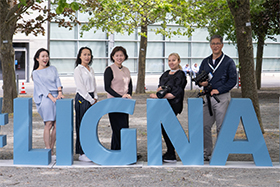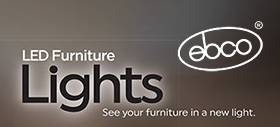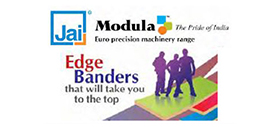Elegant mathematics is bending the future of design

Researchers at the Swiss Federal Technology Institute of Lausanne (EPFL) in Switzerland have developed a new way to design complex, curved 3-dimensional shapes using flat materials such as paper, aluminium sheets or plastic, combining creative thinking with a new computational algorithm.
Have you ever rolled a piece of paper into a cylinder, or tried to wrap aluminium foil around an object without making it crumple? Imagine being able to simply turn a piece of flat material into beautiful, strong furniture, lighting or even the buildings and bridges of the future.
In the world of architecture and product design this idea of building complex 3-D shapes using flat materials has always been a fascinating challenge. Flat sheets made from materials such as paper, metal, or plastic are easy to cut and manipulate.
But, until now, turning them into specific curved shapes has required clever engineering and
design, expensive shaping tools and often a lot of trial and error.
C-Tubes
Enter ‘C-Tubes’, a new way to build curved, tubular structures using flat strips that bend without stretching or wrinkling, developed by researchers from the Geometric Computing Laboratory at EPFL. Their paper was presented recently at the SigGraph 2025 Conference, receiving the Best Paper honourable mention.
“In architecture, engineering and design, surfaces you can make from flat sheets of material are called developable. A sheet of paper, for example, can be rolled into a cylinder or a cone without damaging it,” explained Klara Mundilova, a post-doctoral researcher.
“Designing with developable surfaces is tricky, and most methods require careful tuning to avoid creases or distortions. We take a different route and assemble parts that are developable by construction,” she continued.
The researchers came up with a system where they cut flat strips from a sheet, then bend and connect them to form closed tubes that curve, twist, and loop in space. These ‘C-Tubes’ are surprisingly stiff and strong, even though they’re made from materials that are flexible before assembly.
Behind this simplicity lies elegant mathematics, and the underlying geometric concepts open exciting new possibilities for designing and building with flat materials.
More sustainable
“We developed an algorithm that determines how to design objects that can be assembled from flat pieces that can be cut, bent, and then joined together. Our algorithm adjusts the input parameters so that the final shape matches the designer’s goal and is guaranteed to work as a physical object,” said Michele Vidulis, PhD student.
“In the end, we intend to relieve designers from worrying about fabrication so that they can focus on aesthetics and function,” said Quentin Becker, also a post-doctoral researcher with the project.
This is an important development because one of the biggest challenges in design is making sure that a shape is buildable. That is, when you try to force a flat material into a complex shape after designing it, it often ends up wrinkled or torn, because the surface wasn’t designed with real-world materials in mind.
The new algorithm analyses the geometry and structure of possible ‘C-Tube’ shapes, automatically building them in a way that guarantees all their parts are developable. New mathematical insights are complemented by numerical optimisation to tweak the shape so that it matches the designer’s goals.
This means that designers can be faster, and more creative with their designs, focusing on shapes that will be easy to build. But there are other benefits to ‘C-Tubes’ and the new algorithm as well.
“It’s a more sustainable production process than traditional manufacturing. There is less waste compared to carving or molding methods, and because ‘C-Tube’ structures are lightweight with an excellent stiffness, less material is needed overall. This also saves energy during production, and flat materials are often easier to source, transport, and recycle,” said Florin Isvoranu, an architect with the laboratory.

Revolution in design?
‘C-Tubes’ can be applied to almost any 3-D design where strength and lightness matter. Already, as part of their ongoing work, the researchers have designed furniture, including a rocking chair, and a prototype lamp.
Looking ahead, they can imagine applications in the architecture of buildings, large roof structures or domes, ship hulls or automotive design – all curved shapes that are currently difficult to build. As with many industries, one challenge to overcome will be the inertia for adoption.
“People already have huge tool sets at their disposal. We want to show that it’s possible to create more interesting things without raising the complexity of production and we’d love to find a partner who would like to use this technology to build something with us!” said Professor Mark Pauly, head of the laboratory.
Overall, Pauly concludes, ‘C-Tube’ has been a dream project to work on with an interplay between materiality, design and elegant mathematics. “There’s an elegance to the intersection of all this – interesting theory, powerful algorithms and then a technique to physically produce things,” he concluded.

– The writer is a journalist in charge of Science Outreach and Communications at EPFL. She can be contacted at tanya.petersen@epfl.ch
Comments

- European symposium highlights formaldehyde emission limits
- Egger adopts holistic approach to waste management
- Taiwan’s Woodworking Machinery Industry Captivates Global Media on Opening Day of LIGNA 2025
- Coming of age of sustainability
- Intelligent packing line, sander from Woodtech
- Ornare introduces 5 new leather decors
- Richfill Edge Coat offers safer plywood finishing
- Jai’s Optimus range stays ahead of the curve
- Merino’s Acrolam sets new benchmarks in elegance
- Pytha 3D-CAD: where precision meets production
- Raucarp edge bands: simple, affordable
- Greenlam scores a 1st: High Quality Product Award
- Häfele turns space solutions provider
- Hettich bets on intelligent motion for evolving interiors
- Praveedh taking desi innovation to the global stage
- Turakhia shows off its Natural Veneers range
- Egger continues to ‘inspire, create, grow’
- Blum turns heads with new drawer, hinge systems
- FSC benchmarking responsible forestry
- At 100, Festool powers new solutions
- Door manufacturing on cusp of transformation
- AI-powered crib sings a universal lullaby
- In Full Bloom: Top brass at Blum takes a shot at burgeoning India market
- Elegant mathematics is bending the future of design
- Wood fibres weave new textile yarn
- Rolls-Royce icon: ‘most intricate woodwork ever’
- Felder’s long-term view to achieving excellence
- Tech in the future of furniture manufacturing
- Exports from India on horizon: Juergen Koeppel, CEO, Leitz Tooling
- Pfleiderer adds value with digital ‘structure finder’
- Australian architects design for KEEPsakes
- Jump shot! Crafting the ultimate pool table
- Apple adopts CLT to cut building emissions
- Sustainable design at Hotel Hábitat 2025
- Vecoplan tailors waste wood processing at Schaffer Holz
- Dealer engagement goes digital
- How to refinish wood decks like a pro
- IWMMTA makes strong beginning in the East
- Feria Hábitat weathers unusual Spanish storm
- Interzum Guangzhou 2026: materials defining the future
- Forum Italy: Beyond Furniture, Towards the Future
- CIFF Shanghai: hub of design, innovation
- Interzum Jakarta debuts with strong connect
- DAIC to showcase Kerala’s prowess this December
- Events Calendar: Industry fairs to visit


































